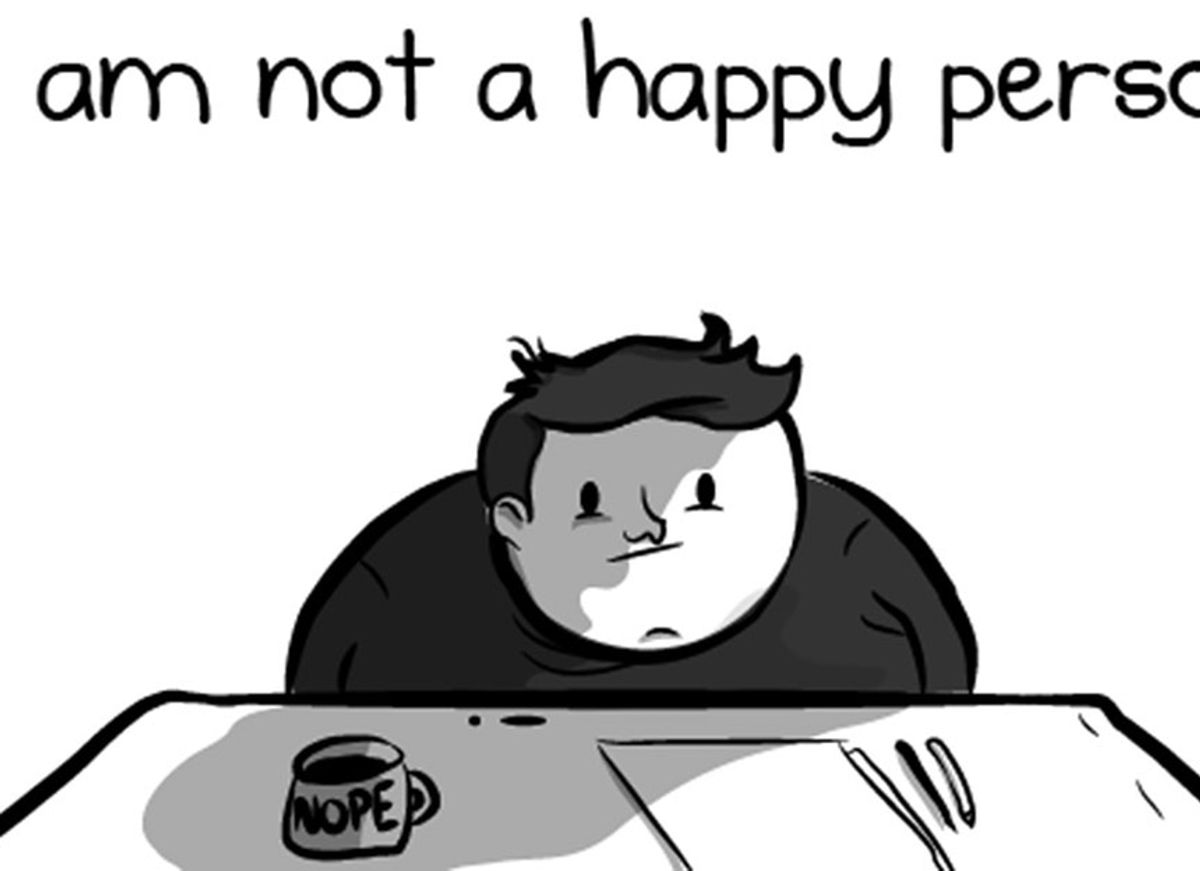Modern Families
A comic from The Oatmeal illustrates how we're missing the mark on happiness
I do the things that are meaningful to me, even if they don't make me "happy."
09.09.24

By Matthew Inman/The Oatmeal. Used with permission.
How to Be Perfectly Happy
Matthew Inman is the Eisner Award-winning author of The Oatmeal. He's published six books, including New York Times Best-Sellers such as "How to Tell if Your Cat is Plotting to Kill You" and "The Terrible and Wonderful Reasons Why I Run Long Distances." He enjoys running marathons, writing comics, and eating cake.
You can read more of Matthew's comics here.
Comic by Matthew Inman/The Oatmeal. Used with permission.















More comics from The Oatmeal:When your house is burning down, you should brush your teeth.

My dog: the paradox

It's going to be okay.















More comics from The Oatmeal:

From Your Site Articles
- 17 hilarious parenting comics that are your life. - Upworthy ›
- 6 too-real comics show what happens when work gets too heavy ... ›
- 15 Hilarious Parenting Comics that Are Almost Too Real ›
- 10 things that made us smile this week - Upworthy ›
- 10 things that made us smile this week - Upworthy ›
- Comic illustrates what to look for in a job besides money - Upworthy ›
- 10 things that brought us joy this week - Upworthy ›
- 10 things that brought us joy this week - Upworthy ›
- 6 too-real comics show what happens when work gets too heavy - Upworthy ›
- 6 too-real comics show what happens when work gets too heavy - Upworthy ›
- 10 things that made us smile this week - Upworthy ›
- A brilliant Harvard psychologist explains how to achieve happiness - Upworthy ›
- 10 things that brought us joy this week - Upworthy ›
- Upworthy's 10 things that made us smile this week - Upworthy ›
- Upworthy's list of 10 things that made us smile this week - Upworthy ›
- South Korea's key to happiness: "Sohwakhaeng" - Upworthy ›
- Happiness researcher explains his 'reverse bucket list' - Upworthy ›



